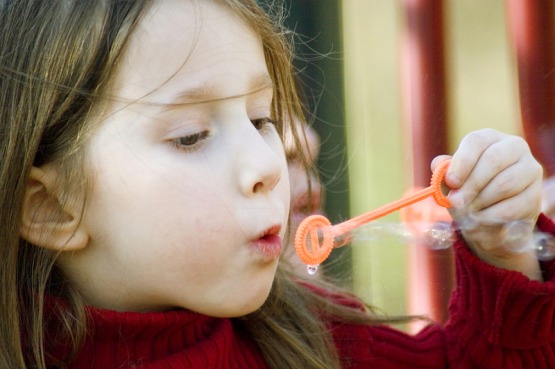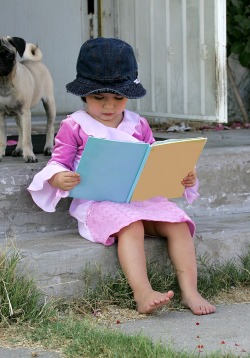In this article, you'll learn some very effective practical and easy-to-use secrets that professional photographers use to create award-winning, heart-melting, smile-provoking pictures of kids! Whether it's a photo session you're setting-up for your own children or doing some child portrait photography work for a paying client, these tips will help you create the kind of photos with genuine personality that every parent will want to hang on a wall.
|
|
How to Take Great Pictures of Kids
By Emma David Staff Writer/Photographer © 2011, FreePhotoCourse.com; all rights reserved One of the most rewarding aspects of portrait photography is that of photographing children. O.K., I'll come clean here; to be totally on the level, the photo shoot itself can actually be anything from mind-numbing to frustrating. It all depends on the age and mood of the child. However, when done right (and with a nice measure of luck) the results can be exhilarating and heart-warming, and that makes it all worthwhile! One of the best things about a good child portrait is that it can reveal a great depth of emotion and personality, and can do more honestly than is generally seen in most portraits of teens and adults. The child IS honesty and a good portrait can show this in spades. Before revealing my own secrets for award-winning child portraiture, let me draw a line of distinction between that of photographing your own children and those of other parents. Photographing your own children is an absolute breeze compared to being hired to do portrait work for a stranger's kids. When they're your own, it's a walk in the park, because if you're any kind of decent parent, you know your own kids more than anyone else. You know when they're happy, upset, sensitive, agitated and so-on. You can pick and choose the particular mood you're looking for and the day that works best. You also know how to make them laugh, when to say nothing and how to calm them down. |
|
|
|
|
|
|
These tips will definitely help you to compose the kind of child portraits that win awards and that
parents will want to hang proudly on a wall – whether the parent is you or a paying customer!
Next Photography HOW-TO Article:
How to Get Dramatic Dark Blue Sky in Your Pictures
MORE PHOTOGRAPHY LINKS:
HOME PHOTO TIPS INDEX DIGITAL PHOTOGRAPHY COURSE "HOW TO" INDEX PHOTO FORUM
SITE SEARCH CONTRIBUTOR'S GALLERY CAMERA & GEAR STORE FREE DIGITAL IMAGES
PHOTOGRAPHER PROFILES GREAT CITIES EXPOSED PHOTO EXHIBIT SERIES
© FreePhotoCourse.com. All rights reserved. Reproduction, storage, copying, publishing, manipulation, digitizing or selling of any of the text or photos on this website is strictly prohibited. Under no circumstances shall any part of the content on this website be plagiarized or referenced as the work of an author or photographer. Re-selling of any of the content on this site is strictly prohibited. The lessons on this website were provided free of charge for individual home users; if you paid for any of this you have been cheated. Please report any misuse, sale or plagiarism of this material here OR E-MAIL US AT: CONTACT@FREEPHOTOCOURSE.COM
Browse, learn, purchase and explore with confidence.
Certified virus-free, malware-free, spyware-free, scam-free and spam-free
Associate-Sponsor Disclosure Content Download & Terms of Use Privacy Policy Contact Us Contributor's Gallery Terms of Use Forum Terms of Use
Certified virus-free, malware-free, spyware-free, scam-free and spam-free
Associate-Sponsor Disclosure Content Download & Terms of Use Privacy Policy Contact Us Contributor's Gallery Terms of Use Forum Terms of Use


